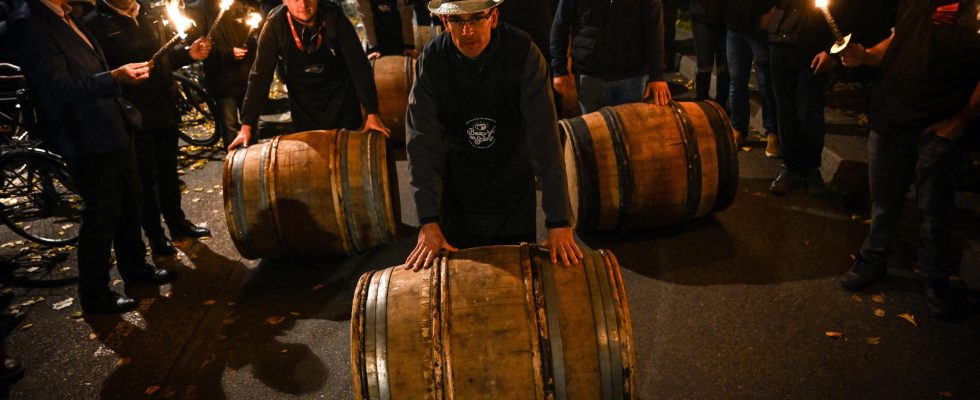As is customary, on the third Thursday in November, Beaujolais Nouveau arrived. If the other wines from the Beaujolais vineyard are still being vinified, this first wine of the year prepares the ground before their release on sale. The economy of an entire region depends on it.
2 mins
This is an important moment for winegrowers, but also for distributors. Beaujolais Nouveaux represents a quarter of production, half of which is exported.
The Japanese still love Beaujolais Nouveau
Japan dominates other international markets, ahead of the United States, the United Kingdom, Belgium, the Netherlands and Scandinavia. And a very small part is sold in Italy, which is very fond of early wines. Commercial flows are continuing despite the prevailing gloom, welcomes Philippe Bardet, president of Inter Beaujolais: “It is much easier to find containers to transport our wines. And the freight cost has decreased compared to last year. I’m talking here about major exports, obviously. In Europe, it’s different. Our problem is not so much finding logistics, it’s more a problem of cost inflation. In particular, salaries in transport have increased significantly. Without forgetting this diesel overload which continues.”
Rising prices
In this context, early wines herald the inevitable rise in prices for Beaujolais, Beaujolais Villages and the ten vintages which complete the picture. “ Over the past two years our prices have increased significantly. A bottle of Beaujolais was found for less than 5 euros in the past, now between 5 and 10 euros. Fortunately ! All our premium wines, our exceptional wines are above 10 euros. We have a qualitative positioning. Beaujolais wine is no longer entry-level,” confirms this trader.
New consumers
It must be said that the success of Beaujolais Nouveau is not achieved with the same consumers as yesterday. Younger, they consume less often, but better. And are willing to put more money into a bottle of wine than the old guys. Winegrowers hope that this enthusiasm for their wines continues. Last year, 16.5 million bottles were sold in France and internationally in more than 100 countries. In 2023, the inter-profession estimates 580,000 hectoliters of wines produced in Beaujolais. This is a little more than in 2022 and 2021. Knowing that for ten years, the vineyard’s production has continued to decline.
Read alsoBeaujolais Nouveau, the 2022 vintage is that of climate change
